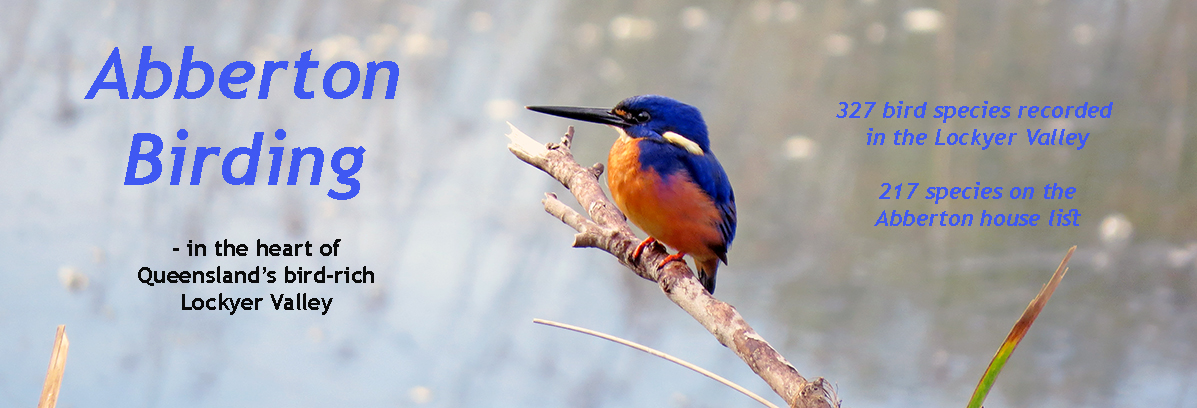|
January 2012
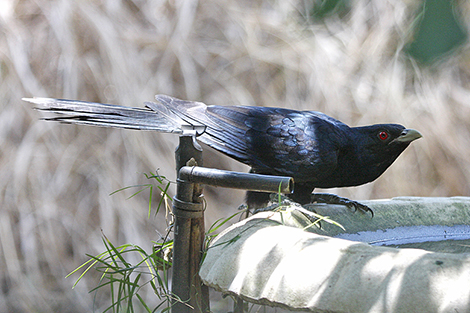
Text about January
February 2012 - Action!
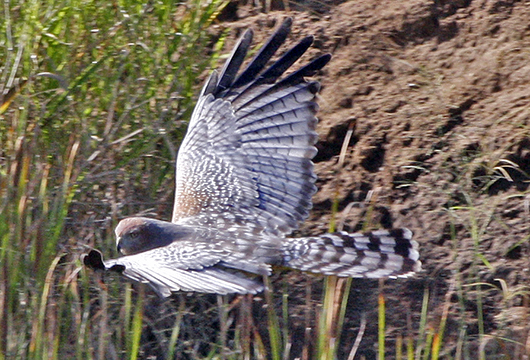
Spotted Harrier
Breakfast on the verandah is very pleasant - unthinkable without binoculars - but how often something special turns up when I haven't bothered to bring the camera outside. I guess we just get lazy, or hungry....
This-morning, I made the effort - two dishes of fruit, two pairs of binoculars, one camera.
Well, things were quietish, lots of garden birds, just the usuals, but very pleasant for all that. Then maybe 20 seconds of drama when a Spotted Harrier appeared from upstream following the creek towards us, low over the margin, wings set. Eileen grabbed her binoculars, I grabbed the camera. His path brought him right in front of us, a little below us in fact. What a beauty!
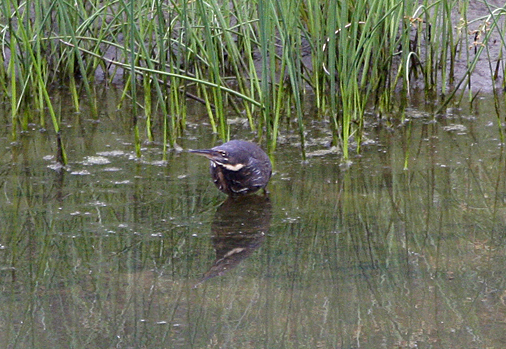
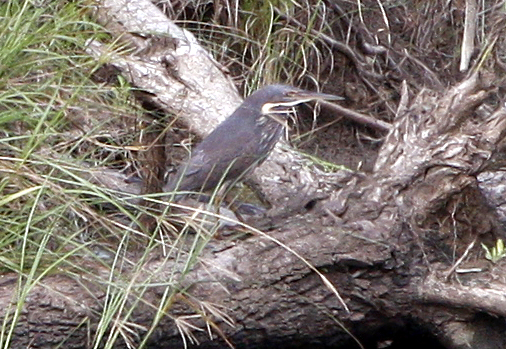
Two different Black Bitterns on two different days
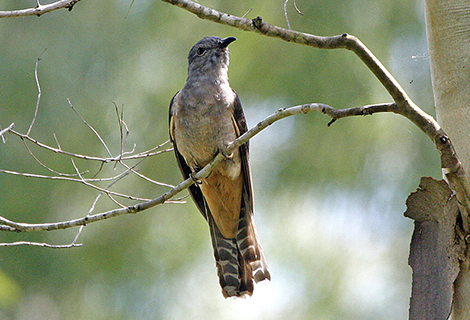
Brush Cuckoo
I do enjoy lazy verandah birding, but I'll follow a cuckoo into the woods anytime. All through breakfast a Brush Cuckoo was repeating its loud, somewhat monotonous call from somewhere on the other side of the creek. We scanned a bit, but couldn't find him.
But just a few minutes after we got back indoors, the cuckoo was calling from much closer by in the garden. I had no choice but to regather binoculars and camera and see if I could find him. Cuckoos do make it easy for us, being noisy and obvious.
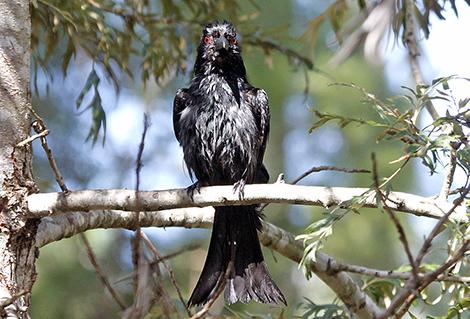
Spangled Drongo
We've opened up one end of the sitting room to the garden with French doors where there used only to be small windows. It gives us a view to a part of the garden that we don't usually see from indoors, and consequently it just demanded a new birdbath. We picked up a big old terrazzo dish at a second-hand place. I don't know what it was for originally, but it makes a good long shallow excuse for a birdbath, so we set it up. After a couple of days it became a regular stop-off point for finches, fairywrens, honeyeaters and such. It's getting well-used. Then last week a Spangled Drongo turned up and spent a huge time splashing around, retiring to an adjacent tree at intervals. He looks a little shocked in the attached photo, almost as if someone has turned up with a camera while he was having a bath!
So, the new bath is a great success, but there is a sub-plot to this. I'm really hoping that it will tempt a few of our local raptors close enough to be photographed from inside the house.
Time will tell.
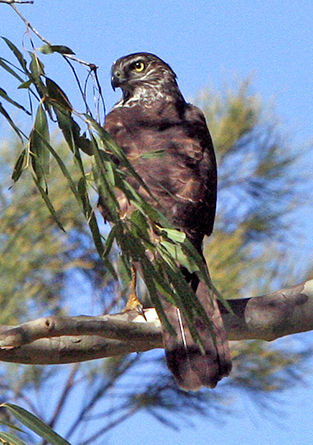
Immature Brown Goshawk
And here, just a week later, is a Brown Goshawk, eyeing the bath from a nearby tree.
March 2012
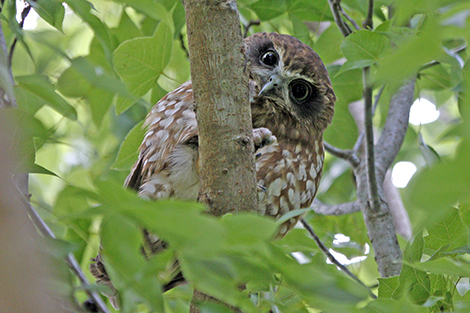
Southern Boobook
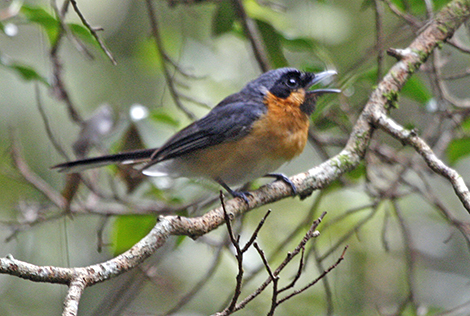
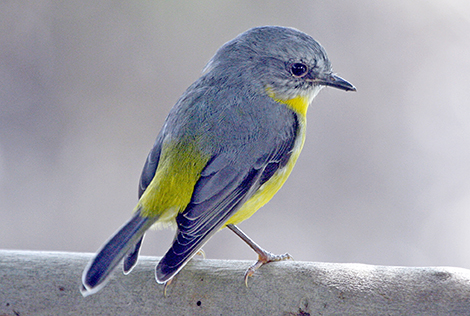


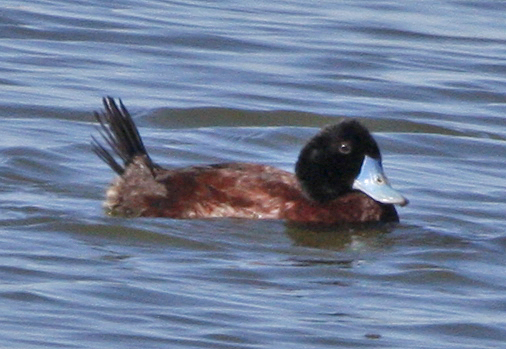
Blue-billed Duck on a local lake
April 2012 - A Bittern, Cuckoos, Cockatoos, and a Goshawk
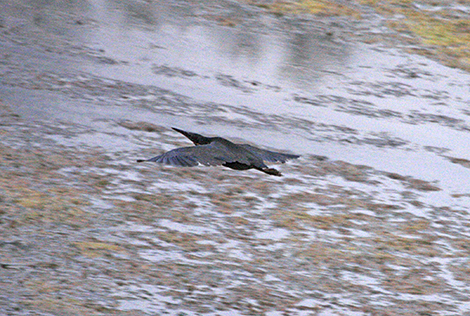
Black Bittern
A couple of afternoons ago, a male Black Bittern which had been standing unseen within the vegetation on the opposite side of the creek from the house around suddenly appeared coming towards me head-on as it flew directly across the creek to this side, dropping out of sight into the vegetated shallows hidden from view from the house by the fall of the bank.
Only 5 to 10 seconds of sighting, but an amazing view.
I waited on the verandah, hoping it might show itself on a log perhaps or wander just into view, or even fly back across the creek. I was determined to wait it out, not to lose my concentration, not to let it get away unphotographed. But after about an hour and a half, with the light nearly gone - nothing from the bittern. Lots else, but no bittern. Then suddenly it was off, downstream, flying low along the middle of the creek in the half-light. Another 5 to 10 seconds of viewing with lots of shutter-clicking, and in the end two or three just recognisable pictures that are really unpublishable, but which for me captured the wonderful evocative experience of waterside birding at dusk.
An hour and half of watching and waiting, for a total of maybe 15 seconds of Black Bittern. Well worth it!
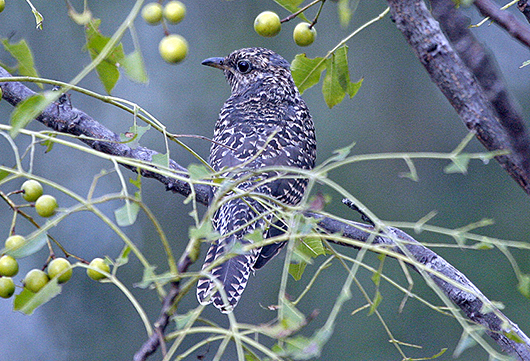
Immature Brush Cuckoo
This gorgeous immature Brush Cuckoo is in one of our Queensland native White Cedars which are fruiting bountifully at present. These berries are an absolute favourite food of Red-tailed Black Cockatoos, so I can share too a couple of pics of a male and a female Black Cockie enjoying the harvest.
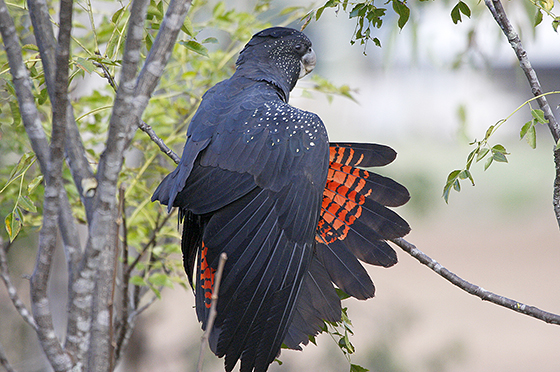
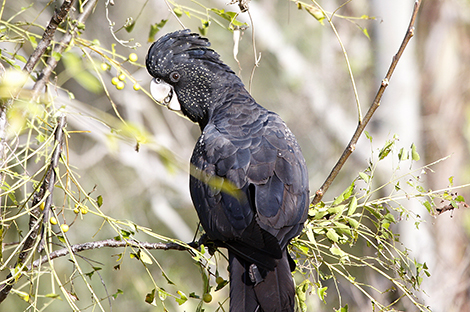
Red-tailed Black-Cockatoos
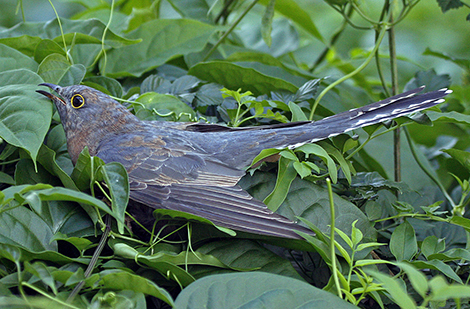
Fan-tailed Cuckoo
An immature Fan-tailed Cuckoo turned up firstly next to, and then on, the verandah recently
May 2012 - Birds and Echidnas
Two echidnas - one spotted on 1st May across the creek from the verandah as it was digging away in the soft soil, and the other photographed on 21st May not just from, but on, the front deck. This one appeared to have followed a trail of ants up from the garden and on to the side of the house.
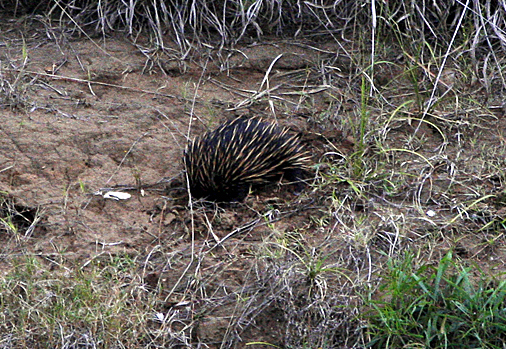
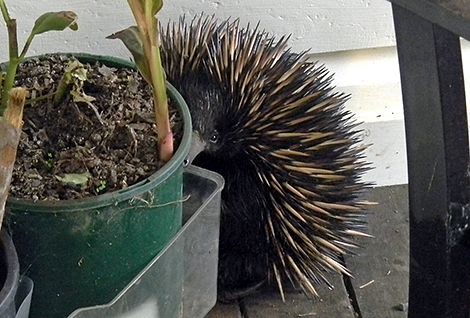
Short-beaked Echidna
Not likely to be the same echidna in both photos by the way, they are quite common around here.
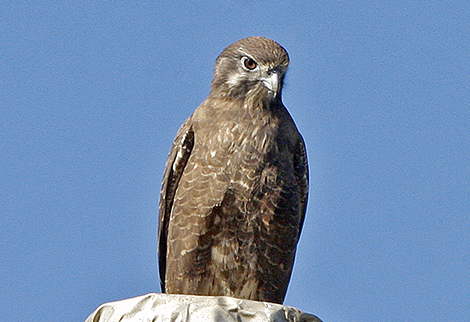
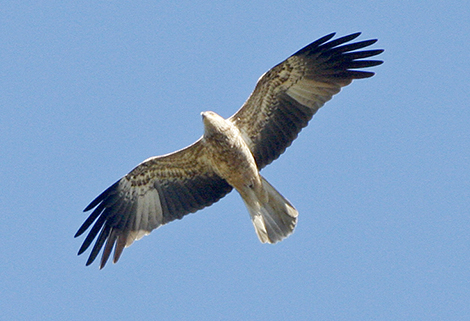


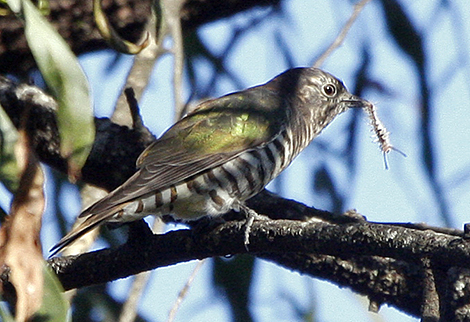
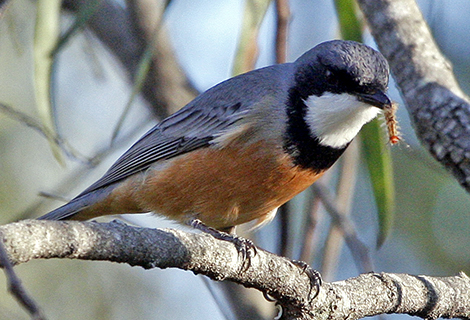


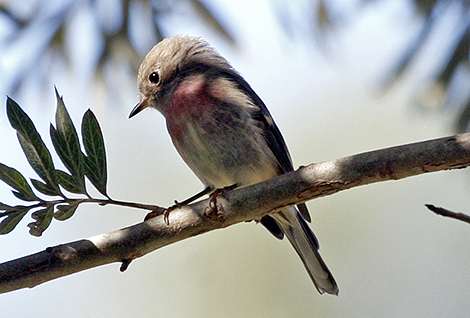
Rose Robin - a winter visitor to Queensland
May/June 2012 - Two new birds at Abberton!
Before I succeeded in getting out a posting about a new species at Abberton on 26th May, another new bird turned up on 3rd June!
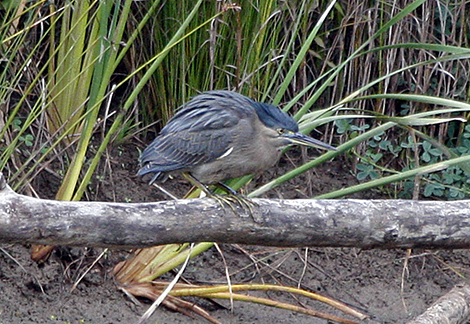
Striated Heron
Firstly, on the morning of 26th May, from the verandah, I saw a Striated Heron creeping along the creek margin opposite. This bird was a long way from its usual hangout in the coastal mangroves, in fact the furthest inland I've ever seen one - we're about 110km from the coast. It stayed around for four days, hunting, roosting and sometimes hanging from some a twigs that were themselves hanging out way over the stream, repeatedly reaching way down to the water, upside-down like a lorikeet or a honeyeater dangling to reach a blossom below.
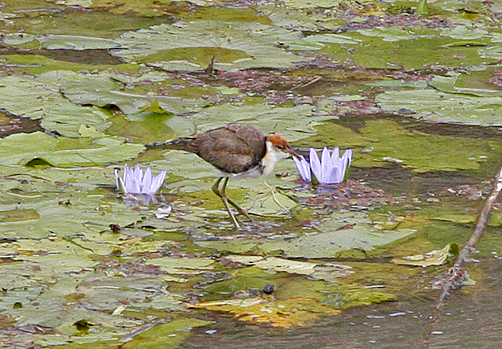
Comb-crested Jacana
Subsequently, following a couple of days of rain, a clear and sunny morning revealed a Comb-crested Jacana flitting between lilypads on the creek. Not an uncommon bird in the local area, but one which we hadn't previously recorded on our house list and, by the way, bringing it to 214 spp.
It was a young bird, beginning to show the black on the sides of the breast that will eventually join to form a breast-band, and with a beautifully rufous crown, but as yet no red comb. You can get a good look at this bird's enormous feet in the flight photo below.
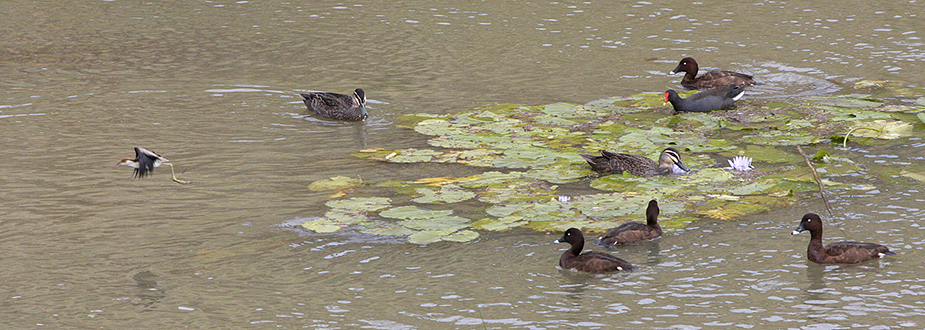
Comb-crested Jacana (left), Pacific Black Duck, Hardhead, Dusky Moorhen
9 June 2012 Beware "whitish" rumps
I had an interesting harrier here the other day which made two low passes along the middle of the creek and the margins.
My first impression, without binoculars, was of a dark un-spotted harrier, with a whiteish rump, so Swamp Harrier kicked in straight away, and that was my mind set for a while. Striated under, colourful beneath, but none of the expected Spotted Harrier colours above.
Getting to the point, it proved to be an immature Spotted Harrier, but I'd already called it a Swamp Harrier in my mind, maybe a female, and it took a while to pick up that it wasn't.
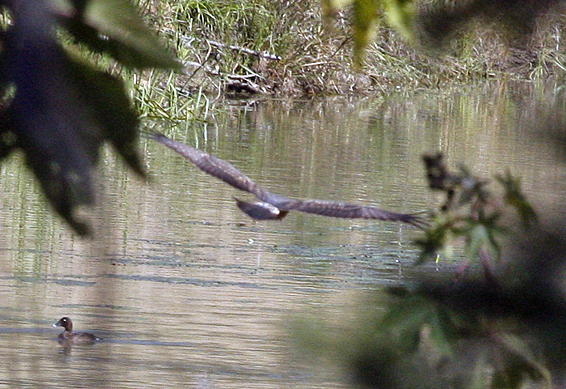
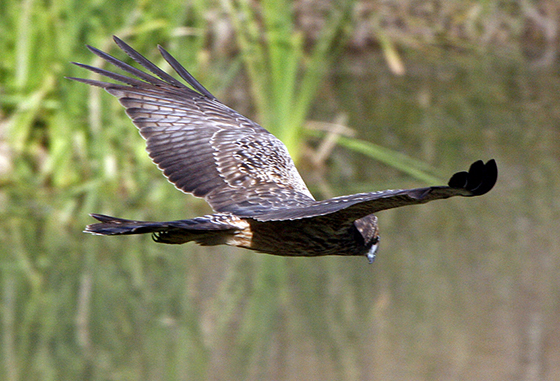
Immature Spotted Harrier
The first photograph above is taken from an angle which appears to show a white rump as the bird is going away, but the right-hand photo and subsequent shots revealed the rump to be darker, flecked white, and showed the spotted upper wing coverts beginning to come through, likewise on the flanks; the face was a good rich chestnut, and the primaries all dark beneath, not barred pale towards the tips. These are not details that one might pick up in the excitement of the few seconds of unfolding drama, when the first targets are key field marks, with the aim of getting enough to be sure of an id - particularly when the bird doesn't already neatly fit either of the regular adult options.
I was left with the feeling that if I hadn't had the camera with me - and if the bird hadn't come so close - I might well have summed up my naked eye view and confidently called this passing bird a Swamp Harrier, on the basis of its apparently white rump. Worth thinking about with imm harriers.
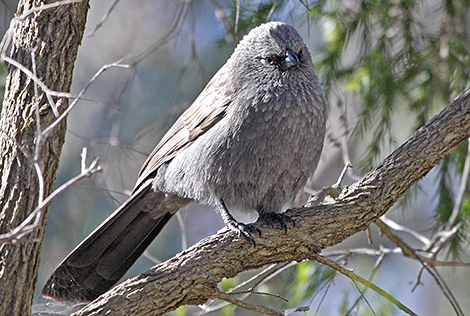
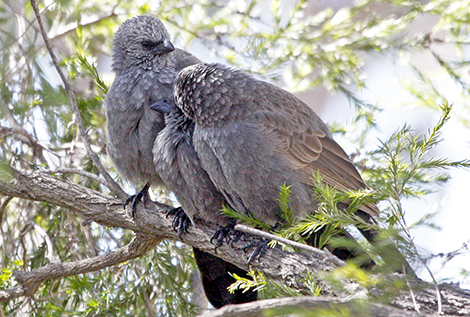
Apostlebirds, an hour or so west of home
and below, Bluebonnets at the same location
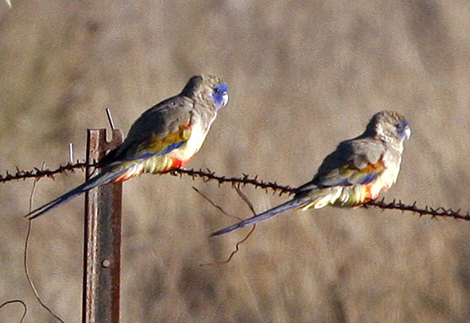
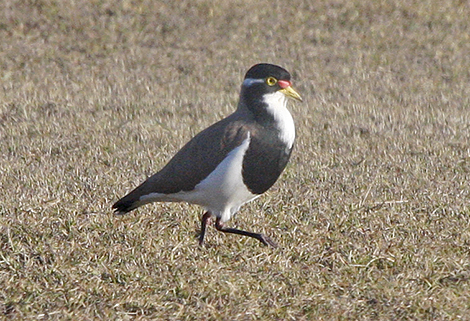
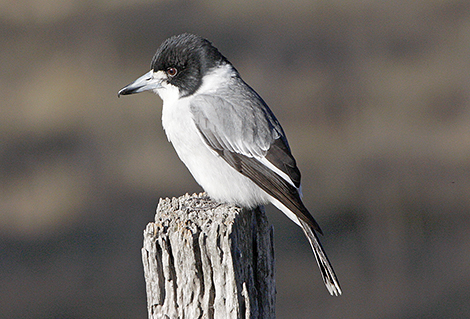
Back in the valley - Banded Lapwing and Grey Butcherbird
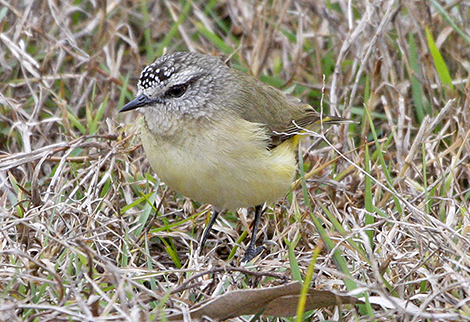
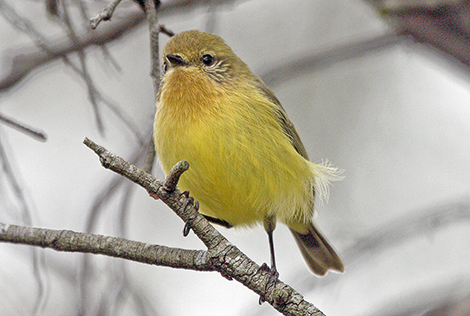
- and in the garden, Yellow-rumped Thornbill and Yellow Thornbill
July 2012 - A good month for raptors
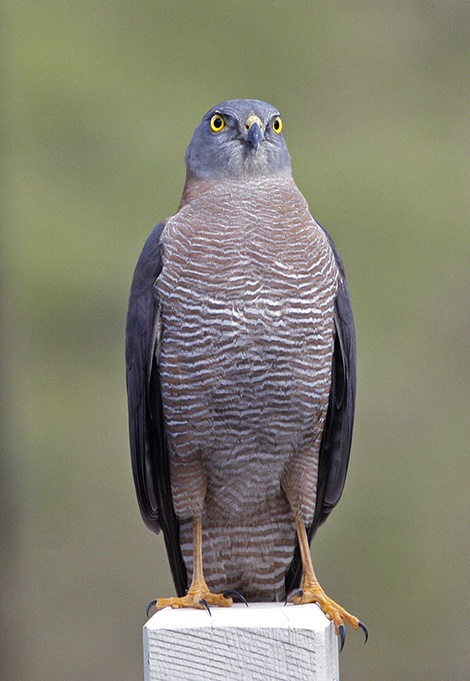
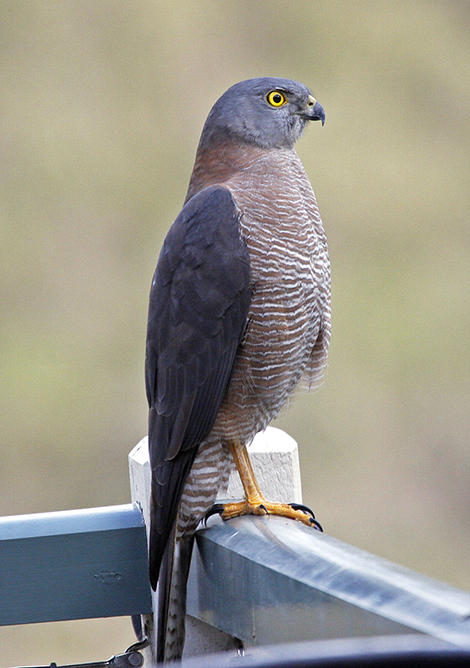
A Brown Goshawk turned up on the verandah.
These photographs are taken across a room, through a closed glass door, handheld, leaning against a bookcase - and holding my breath!
We often see Wedge-tailed Eagles cruising the sky. We've observed three Wedgies together on the ground here sharing a meal of Lace Monitor, each one taking its turn to feed while the other two looked on from nearby. From time to time we enjoy watching their high undulating territorial displays - but today we were fortunate to witness their most spectacular courtship display.
Initially, two eagles were climbing and circling close by each other, approaching very closely from time to time, clearly interacting - then one bird repeatedly flew straight at the other with legs extended until the second bird flipped over, also reaching out with its legs to mutually engage talons and spin earthwards together, fortunately from a great height!
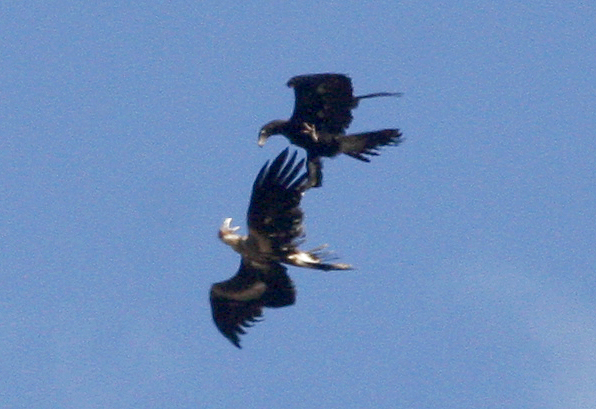
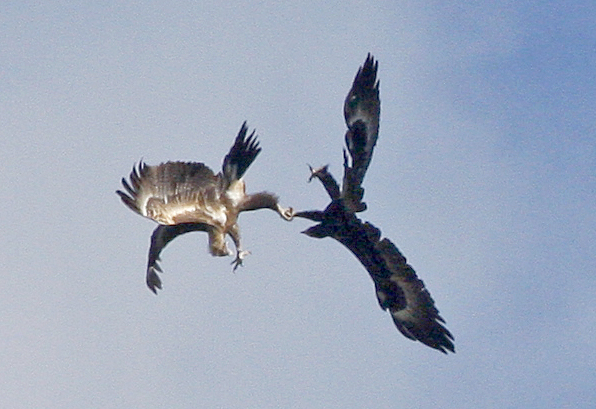
Wedge-tailed Eagles
As I watched them through the camera lens, they continued a spectacular spiral ever-groundwards, still seemingly locked together and I began to worry that they might hit the ground before they disengaged. Thankfully, they didn't, but broke apart at virtually the last moment to fly away together out of sight over a crest. I managed to photograph the whole amazing sequence, and the two photos above show them as they first engaged, and then mid-spiral a few seconds later.
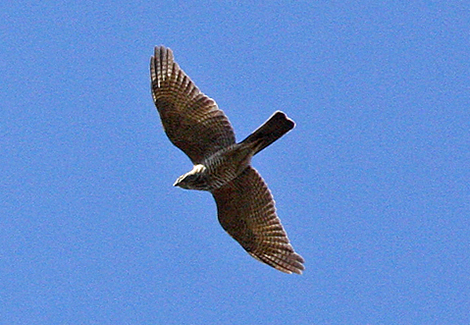
Collared Sparrowhawk
August 2012 - Azure Kingfishers plus
It's well and truly spring now! Nest-building, courtship and general showing off all over the place.
Part of the spring thing is that it's when the birds really look at their finest.
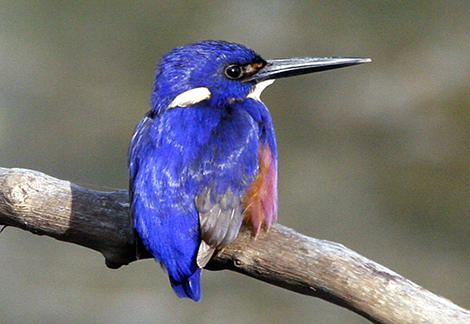
Azure Kingfisher
Azure Kingfishers are regular, and I saw two zipping along together the other day - dare I call them a pair? Judging by the one in this photo, I'd say he's ready!
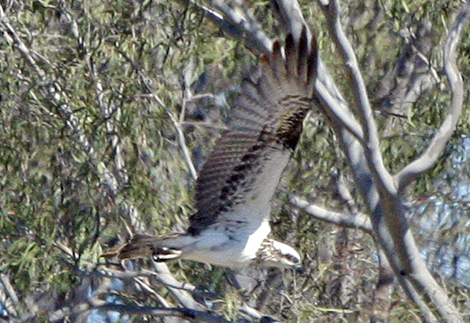
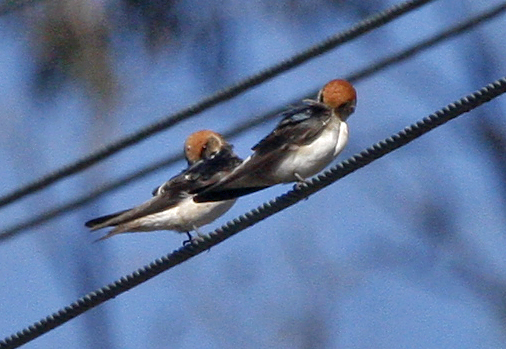
Above the garden, Eastern Osprey and Fairy Martins
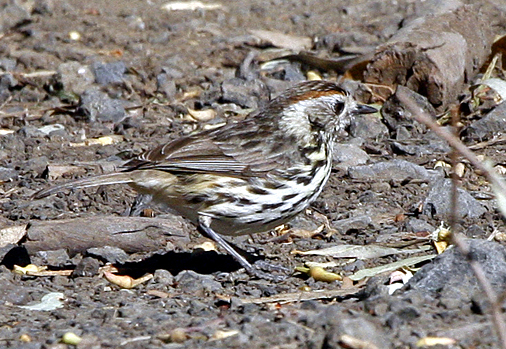
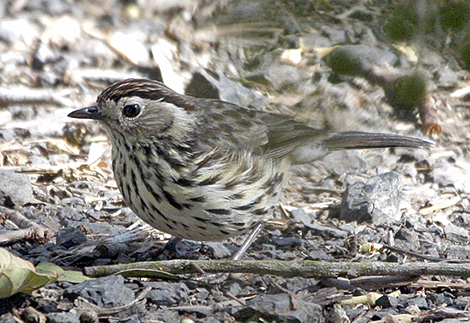
- and in the garden, Speckled Warblers - female (left) and male (right)
September 2012 - Several more raptors and a marsupial
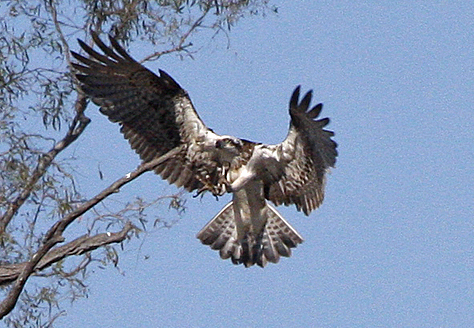
Eastern Osprey
An Eastern Osprey has been around here for about three months now. It's become almost a daily sight, either passing by, or spending long periods in creekside trees. This-morning it selected a big old dead tree just across from the house and made frequent sorties from it low over the creek and back again to one of two favourite perches. I didn't see it capture any prey, but I guess it must be making a living here to be around for so long.
At the same time, a koala was settled high in a big eucalypt on this side of the creek, alternating between dozing, scratching and looking lazily around. We've seen it in that tree for the last three days, though it could easily have been there or nearby for much longer - they can be very hard to pick out even when you know they're there.
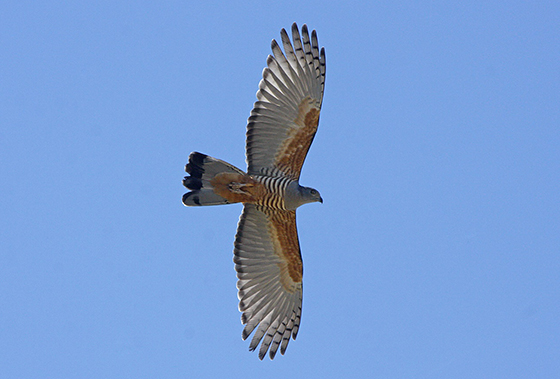
Pacific Baza
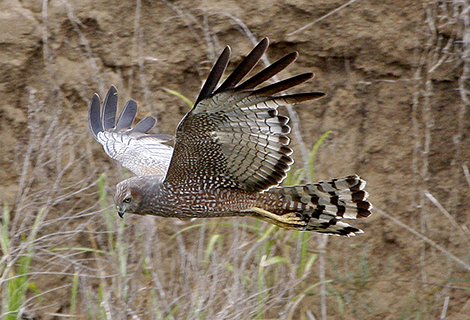
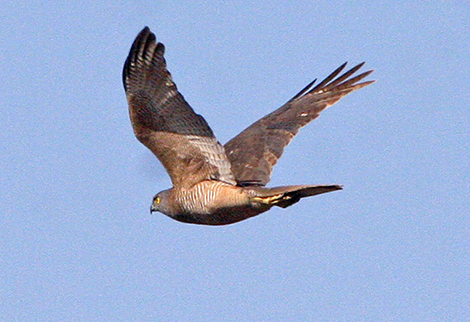


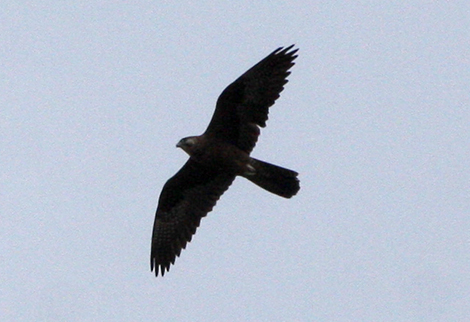
Black Falcon
Other raptors of the day included a party of three Pacific Bazas, being much harassed, Spotted Harrier, Brown Goshawk and Black Falcon. All I could do was point the camera up at the Bazas and click in hope as they were hassled from perch to perch, before departing the scene to the accompaniment of a cacophony of Noisy Friarbirds.
Now, an assortment of birds from around the valley....
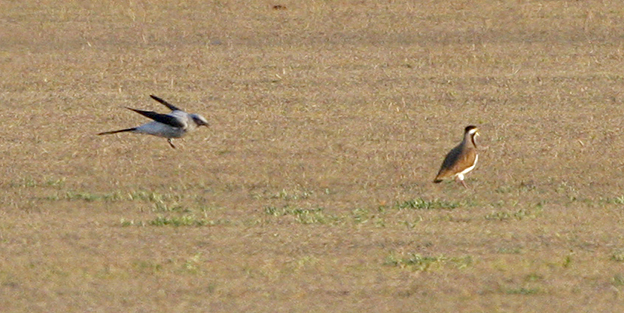
Ground Cuckoo-shrike and Banded Lapwing - often found together
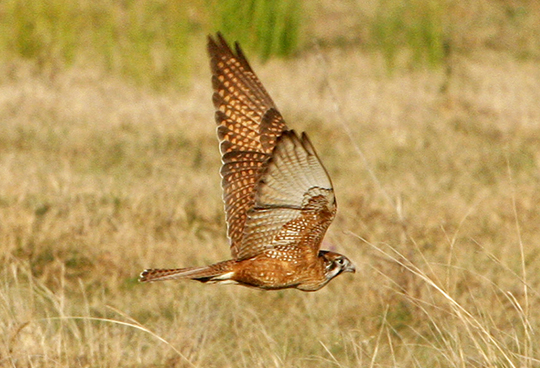
Brown Falcon
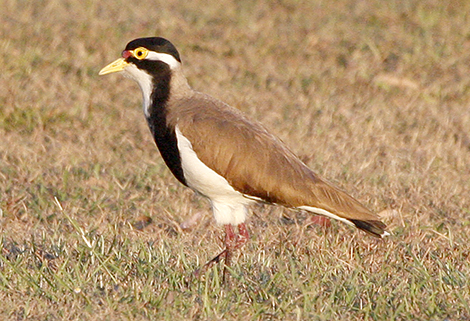
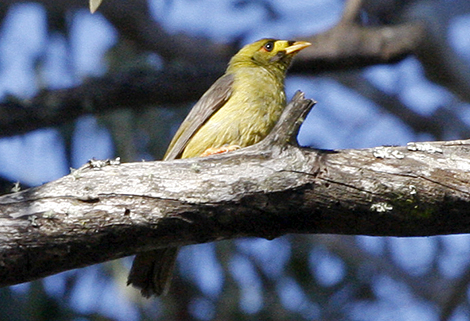


Another lovely spring day!
November 2012 - The stone you don't stop to look at.....
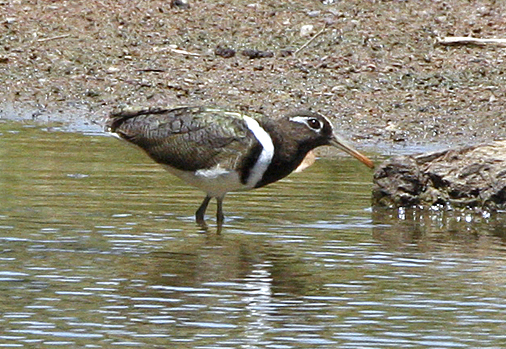
Australian Painted Snipe
As I was driving past a local lake yesterday, I noticed what could have been an odd pebble on top of a small rock, tucked in against another rock, or it could perhaps have just been a pattern showing up on a bird's head. Because I've found that the stone you don't stop to look at often flies away, and because I'd already decided that if that particular stone was going to be part of a bird, it had to be the face pattern on a Painted Snipe, I decided to backtrack for a better look. Well this was one of those backtracks that really paid off - a female Australian Painted Snipe!
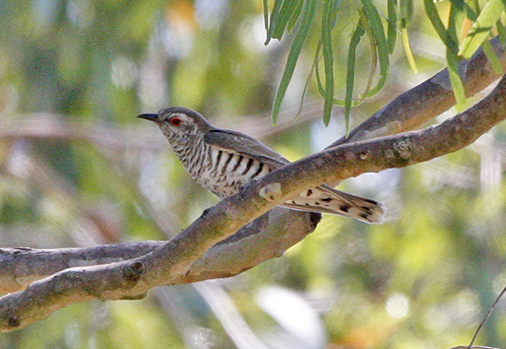
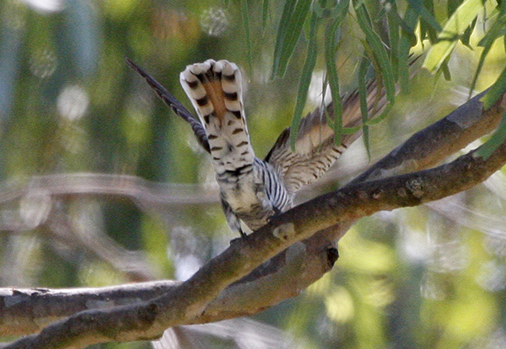
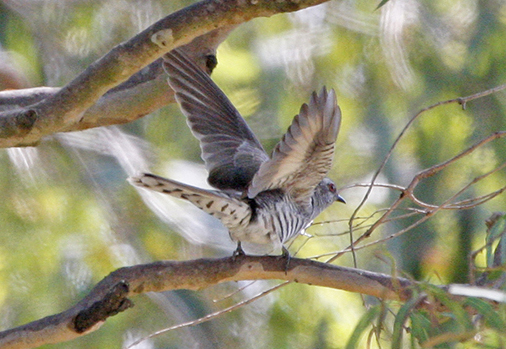
Little Bronze Cuckoo
Little Bronze-cuckoos are calling in the garden every day. These photos were taken from the verandah, and the bird is a bit distant (which is just my way of explaining why they're not really sharp), but I'm including them because they show some of this bird's clearest field characteristics, including the red eye and rufous inner tail feathers. In particular, note the bold white eyebrow, a common feature of Little Bronze Cuckoos, which isn't well illustrated or mentioned in some field guides
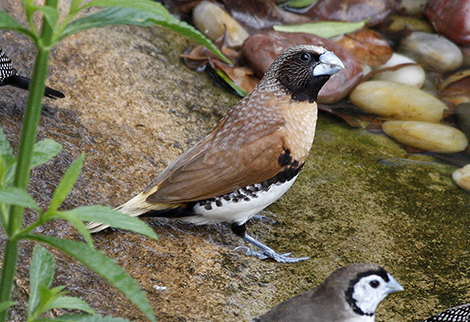
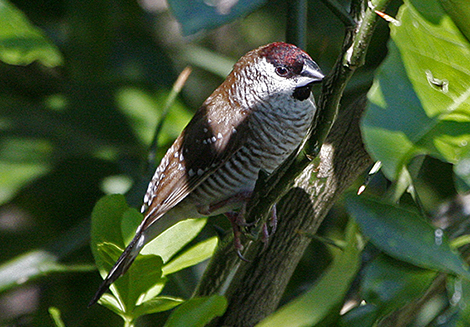


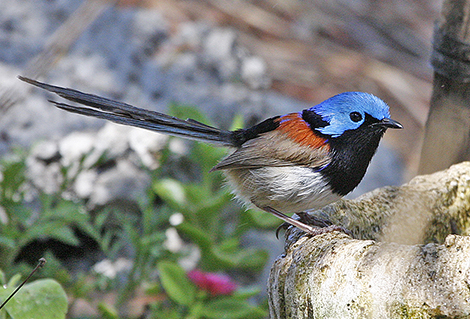
Variegated Fairy-wren
All of our local finches and fairy-wrens have been around the garden in good numbers recently - good-looking birds in their springtime finery.
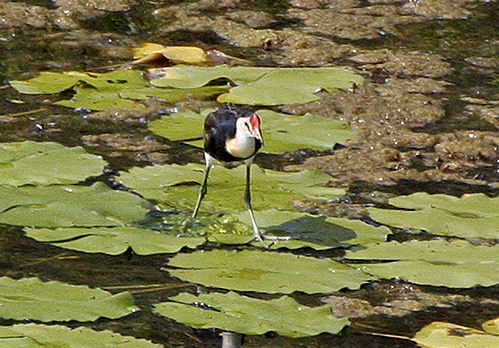
Comb-crested Jacana
The creek is full of waterlilies and we've had a Comb-crested Jacana in residence for the last week or so, feasting over and around them.
Christmas Eve 2012 - 7.30am Cuckoos in the garden
December is always a good month for cuckoos.
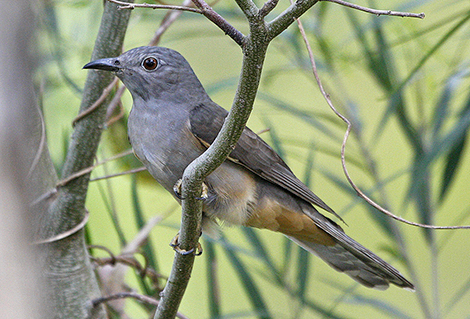
Brush Cuckoo
This Brush Cuckoo has been ever-present in the garden for a few weeks now, calling all day long.
Eastern Koels, and Channel-billed Cuckoos are seen and heard every day, chasing noisily about. Pheasant Coucals equally noisy but only popping up from the undergrowth occasionally.
Horsfield's, Shining and Little Bronze Cuckoos are all here on and off through the summer, tending to spend most of their time high in the trees, calling from time to time from favoured perches.
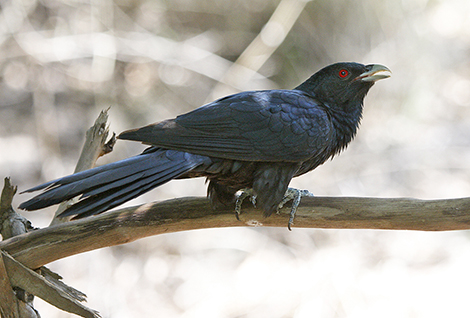
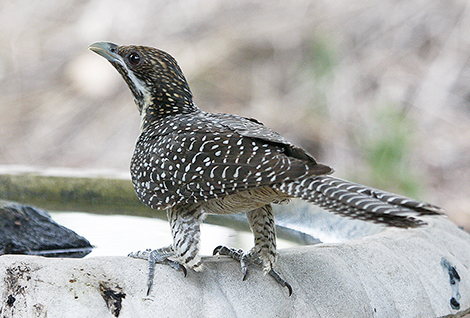
Eastern Koel - male (left) and female (right)
I photographed these male and female Koels from my desk when they came down to the birdbath next to my window.
This female is a big bird!
And so to Christmas...
....but just as I began to sign off above, a richly rufous and black Pheasant Coucal came walking down the driveway right in front of me - and an Eastern Koel has started coo-eeing ever more frenetically from the nearest tree. It just doesn't stop at this time of year!.
New Year's Eve, 2012 - Australian Painted Snipe
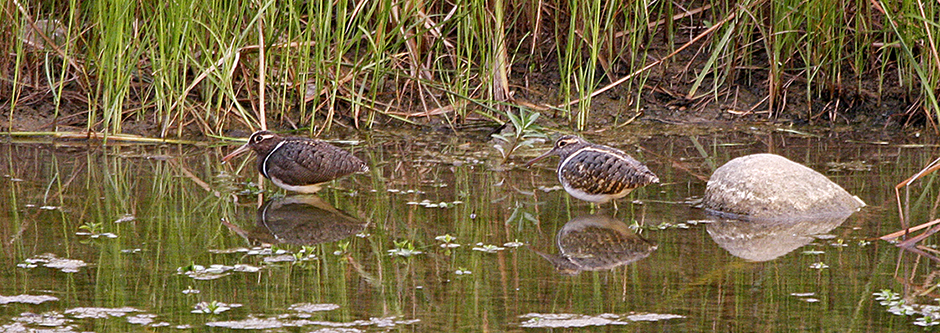
Australian Painted Snipe
I spotted two Painted Snipe on the creek bank here late this afternoon. Male and female, feeding in the shallows just across from the house.
The light was on the wane, and I took some photos with a view to maybe getting more if they overnighted.
Painted Snipe do tend to hang around for days or even weeks once they find a suitable spot.
New Year's Day, 2013 - First bird of the year
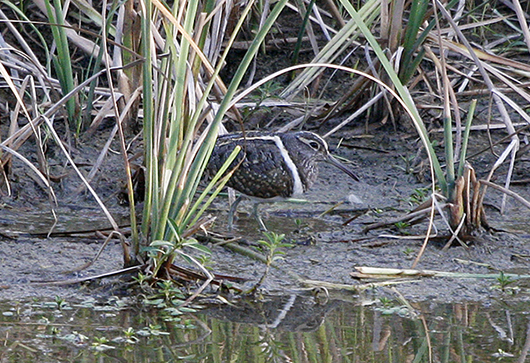
Australian Painted Snipe
It's hard to stay late in bed at this time of year, so I was out on the deck a little after 5 this-morning, and there they were - the first bird of the day, and of the year!
Not a new bird for Abberton - but very special to have them 'in the garden' for all that...
January 2013 - Cuckoos in White Cedar
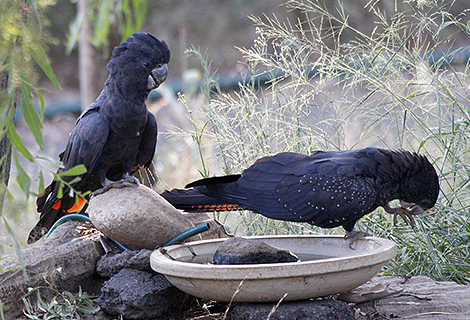
Red-tailed Black-Cockatoos
We've quite a few White Cedars around the place, Melia azedarach, a native tree which loses its leaves in winter - that is if it hasn't already been defoliated by hairy caterpillars which often attack these trees in large numbers.
In summer White Cedars carry clusters of lilac flowers, which in turn lead to a prolific bearing of berries - irresistible to Red-tailed Black Cockatoos. The Black Cockies arrive in groups and systematically work their way through all of them.
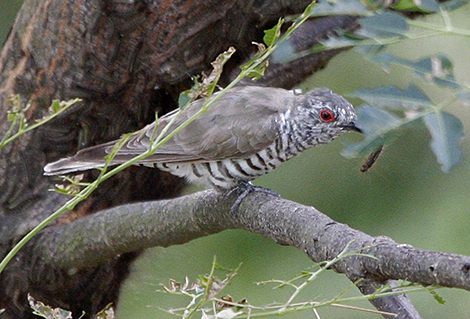
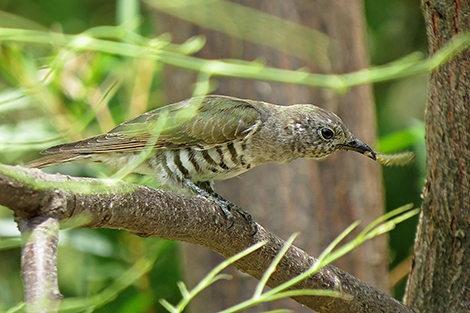
Little Bronze-cuckoo - male (left) and female (right)
This year, one tree close to the house, which has been almost completely denuded of leaves by caterpillars, has also been discovered by a couple of Brush Cuckoos and a male and female Little Bronze-Cuckoo which turn up at odd times throughout the day to feast on the caterpillars.
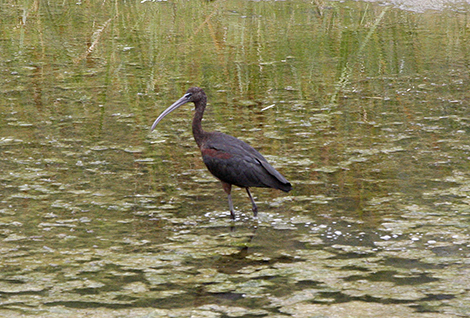
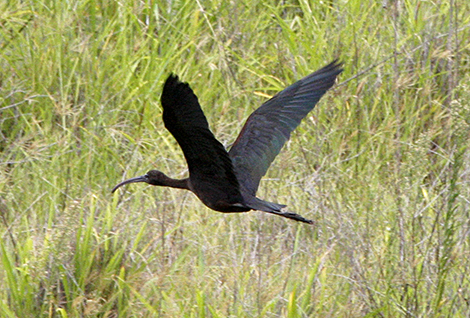
Glossy Ibis
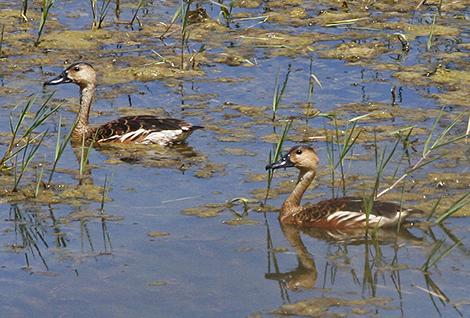
Wandering Whistling-duck
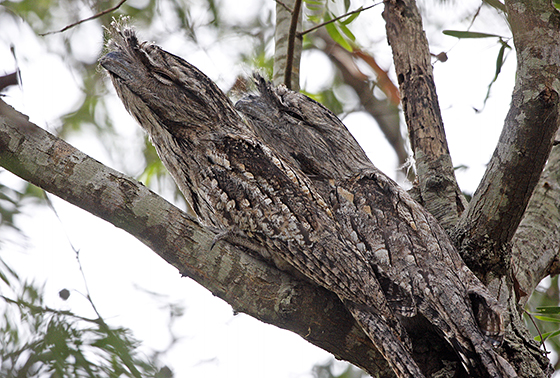
Tawny Frogmouth
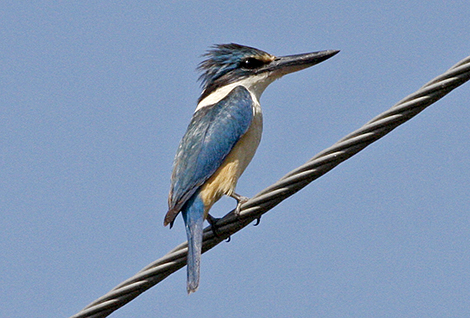
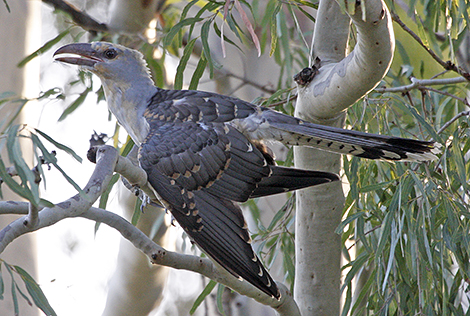


28th January, 2013 - An astonishing day!!
Reports were coming in from early this-morning of pelagic birds being dumped far inland in the wake of Tropical Cyclone Oswald which has been raging over North Queensland for several days.
Long-time birding friend Michael Atzeni called to say that Sooty Terns had been seen just a few kilometres along the road from Abberton. Another birding-friend, Michael Wood, and I hurried over there and were rewarded with the astonishing sight of at least five Sooty Terns, in various plumages, feeding over a local lagoon!
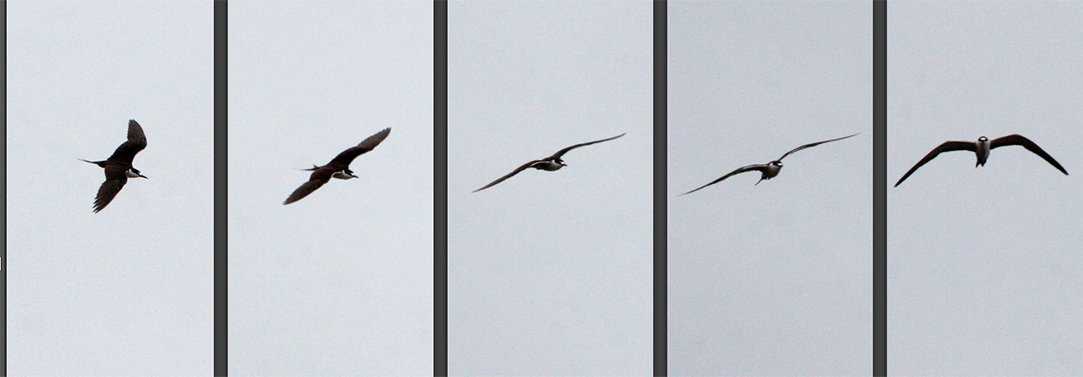
Sooty Terns - adult (above), imm (below)
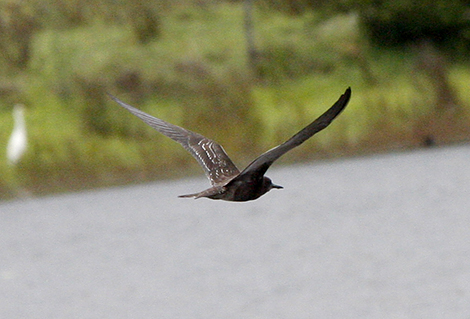
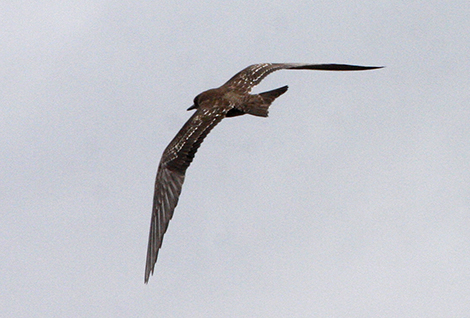
A still bigger surprise was to come later in the day while both Michaels and I were scanning the skies back at Abberton (hoping to add a Sooty Tern to the house list) when to our astonishment a Wedge-tailed Shearwater appeared from over the roof of the house, flew above our open-mouthed heads and across the creek in front of us! No time for cameras!
As I've repeated many times since, I am so relieved that I had two experienced and respected birders alongside me today who are able to confirm that I was not hallucinating at the time!
Now, back to earth with two garden regulars.
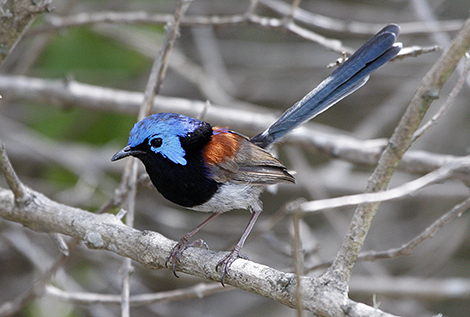
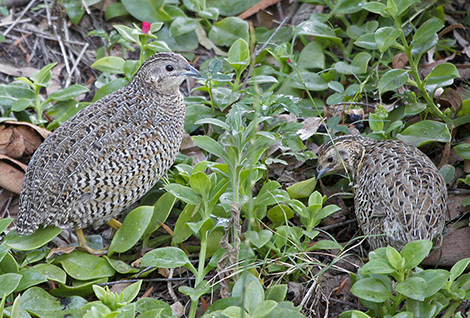


February 2013 - A Family Outing
A party of four Red-tailed Black Cockatoos spent all of yesterday afternoon picnicking in our back garden.
This photo was taken from the verandah.
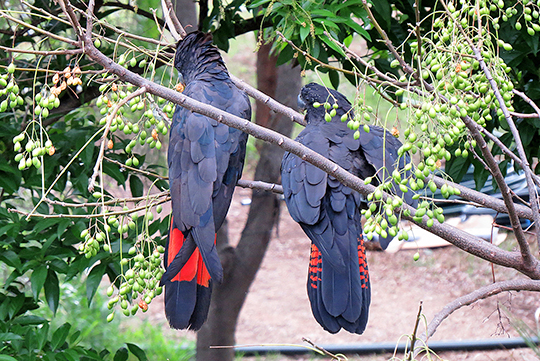
Red-tailed Black Cockatoo
An immature Brown Goshawk teased me the other day by landing briefly on the birdbath alongside my window and almost immediately relocated out of view somewhere along the driveway. I set out to track her(?) down somewhere in the garden, took one step outside the front door, and found her watching me from the nearest eucalypt. I know I often post goshawk pics, but I do have to share this lovely bird!
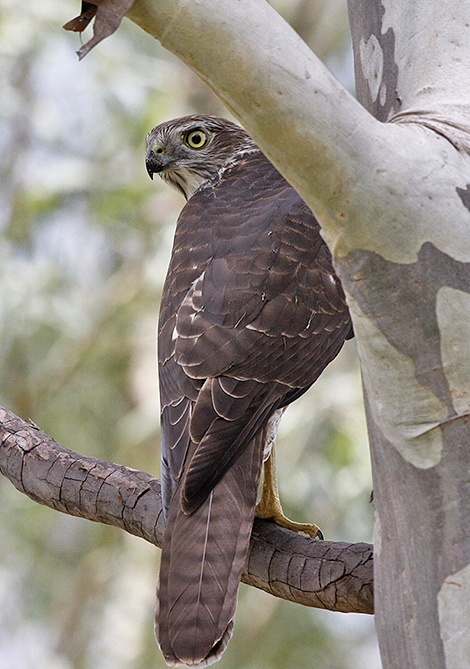
Brown Goshawk
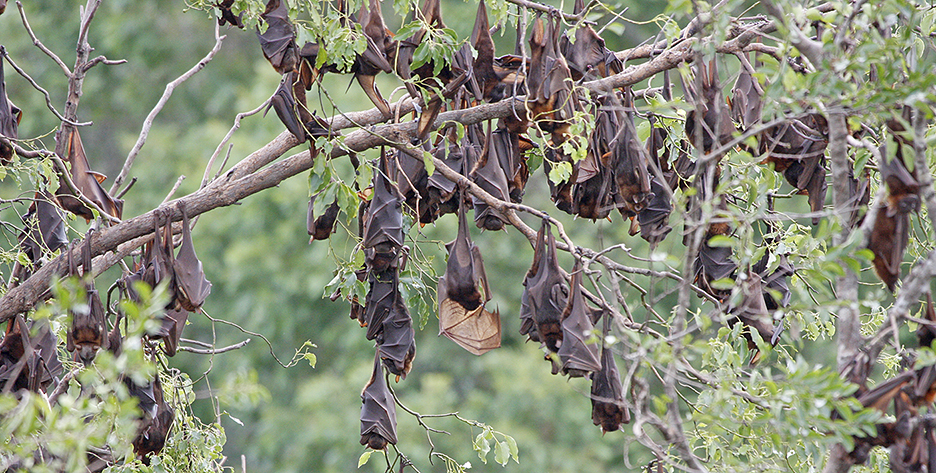
Little Red Flying-fox
I was about to write that flying foxes, or fruit-bats, are generally not very popular. But I think rather that it's more the roosting colonies of these flying mammals close to their homes that cause people so much stress. I admire these amazing creatures individually, but at the same time I do hope they never decide to settle into Abberton. They regularly visit our flowering gums at night to feed on nectar, but these photos were taken at a creekside roost a couple of kilometres away.
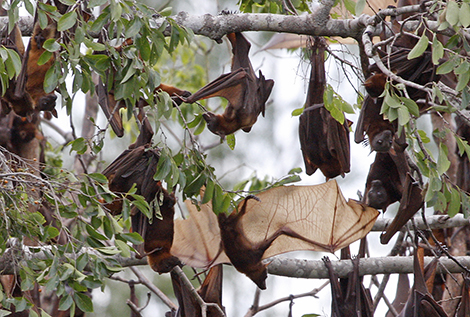
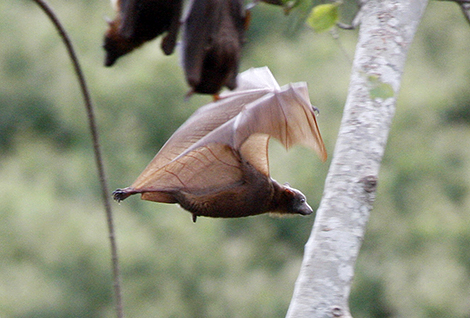
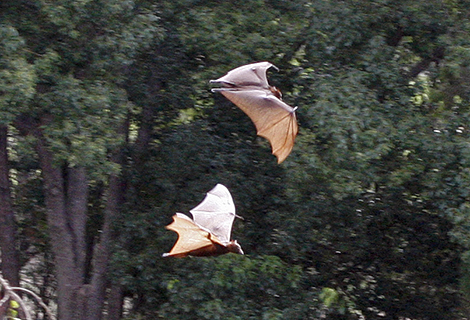
Now for some of our local aerial speedsters....
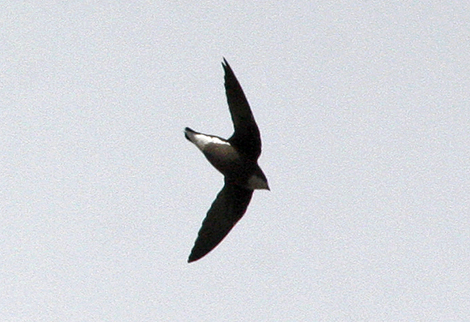
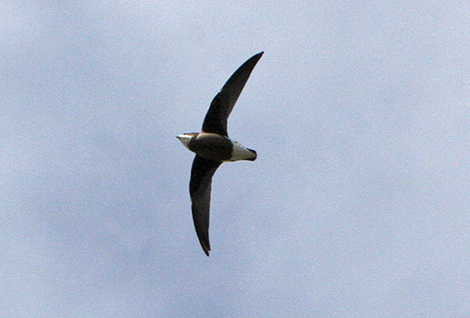
The difficult to photograph White-throated Needletail
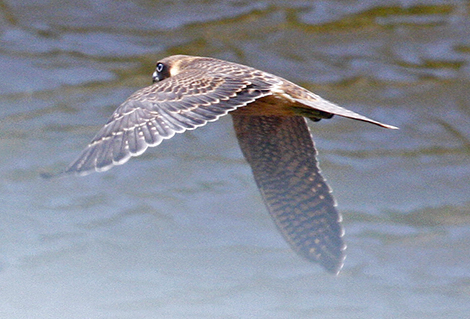
An Australian Hobby on a late-afternoon sortie in pursuit of dragonflies
March, 2013
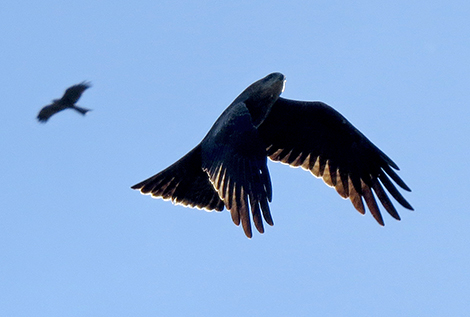
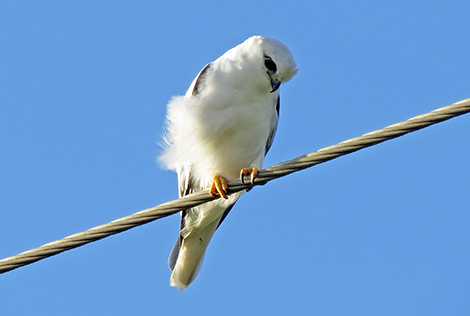


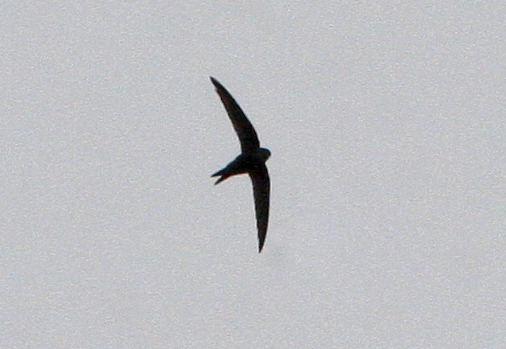
Fork-tailed Swift
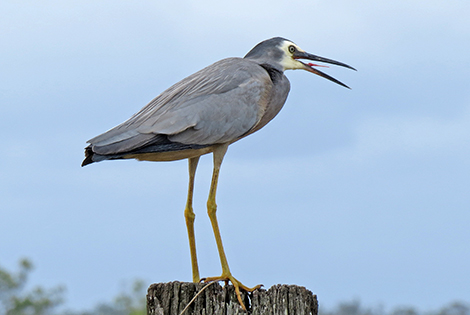
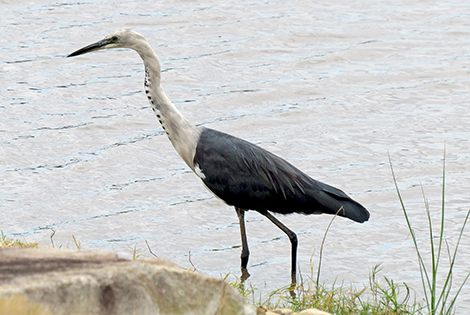


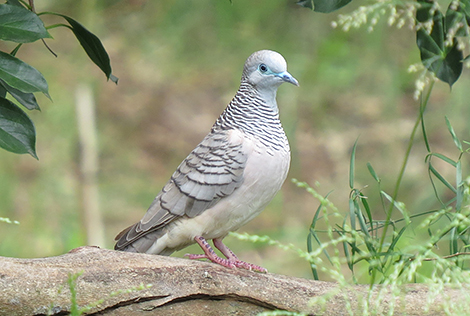
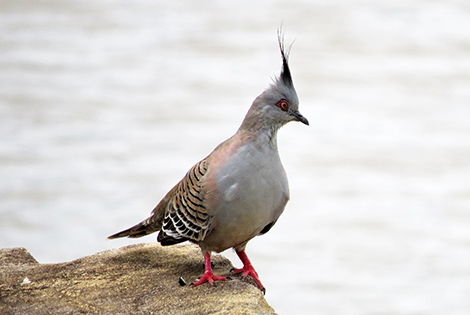


April, 2013
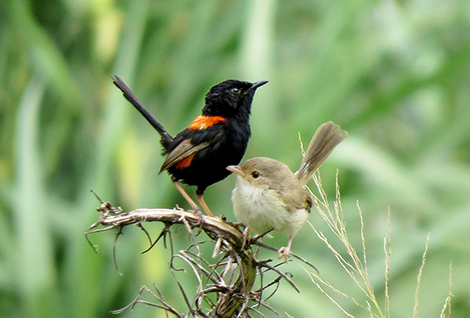
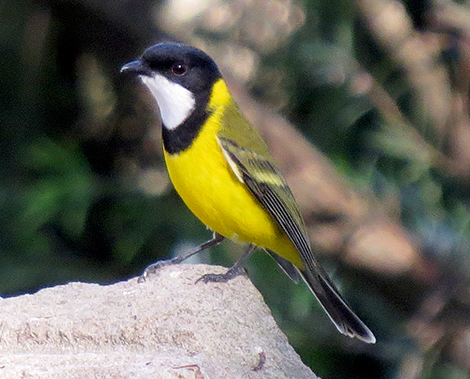


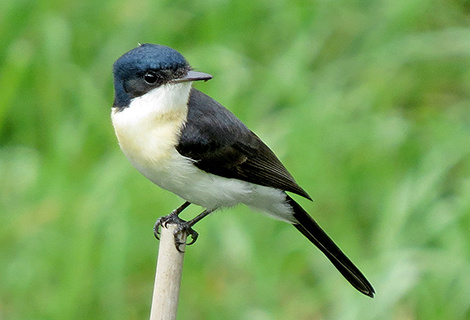
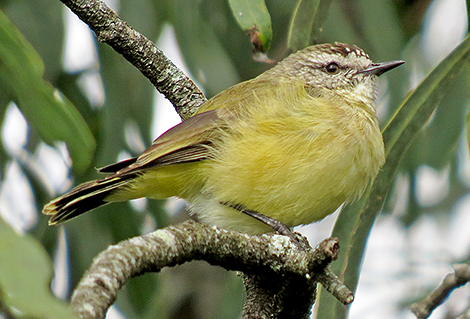


August, 2013 - Back home
Back at last from an over-long trip away and, as ever, very pleased to
be home. Many thanks to Michael Wood who stayed here while we were away and
maintained the monthly listing of birds that we've been undertaking here
since 1988 - adding a couple of records of Budgerigars in June - spp 216
on the house list.
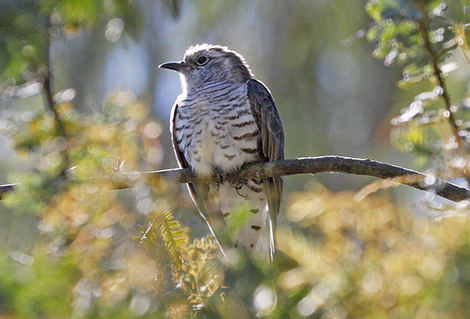
Little Bronze-Cuckoo
Spring has taken hold around the Lockyer Valley, lots of nesting going
on, with Horsfield's, Shining and Little Bronze-Cuckoos all seen and
heard in the garden over the last few days.
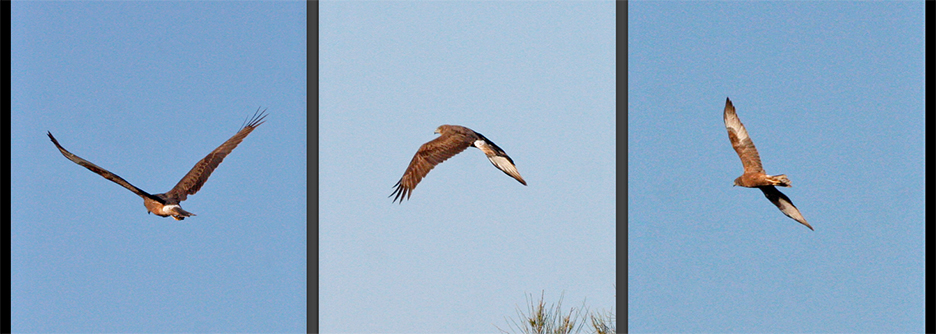
Swamp Harriers are active
Eastern Ospreys returned to Abberton a couple of years ago, after an
absence of seven years, and have been seen here most months since , but
on Sunday 4th August we had two birds here together for the first time.
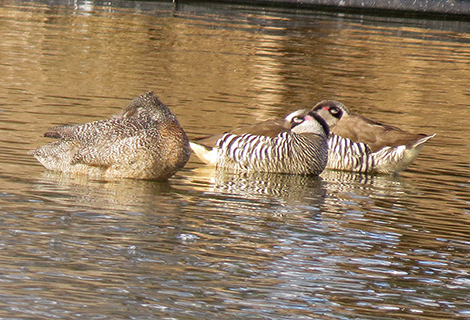
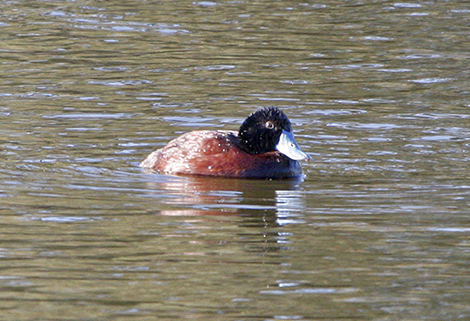
Freckled Duck and Blue-billed Duck on local lagoons
and below, the only Black-necked Stork nest site in the Lockyer Valley
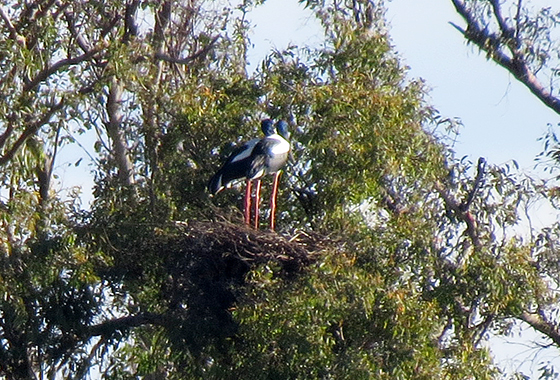
White-backed Swallows were practically a daily bird here through the
1980s and early 90s and eventually petered out from our house list in
2004 - the same year that we lost the Ospreys.
The other day, feeling like a break mid-morning, we set up a couple of outdoor recliners on the main verandah mainly with
a view to watching the treetops at leisure. Several raptors came by, multi-honeyeaters in the treetops, hordes of Fairy Martins, a small group of Rainbow Bee-eaters landed in a dead tree across the creek -THEN, elegance personified, one striking White-backed Swallow glided straight past us from upstream and over (or under) the bridge.
Well, I saw one - Eileen reckons there were two!
So, exciting to be home - don't feel like going anywhere for a while.
September, 2013
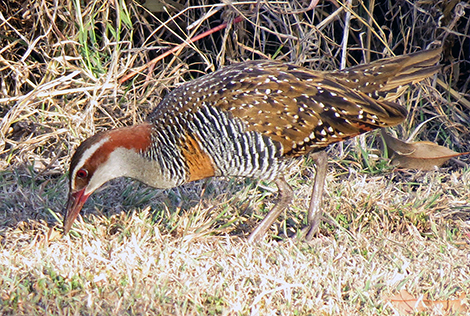
Buff-banded Rail
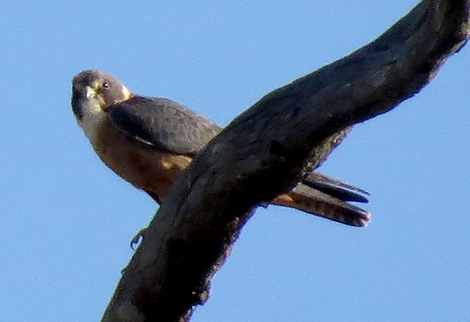
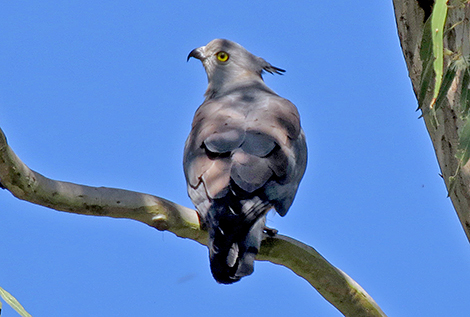


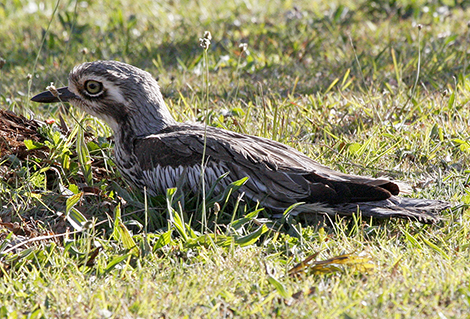
Bush Stone-curlew
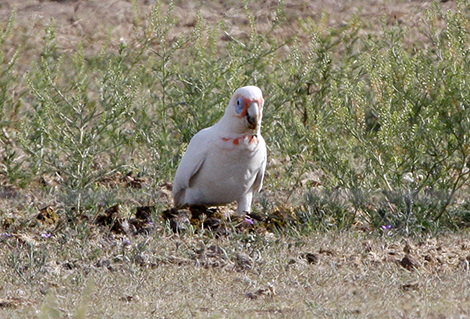
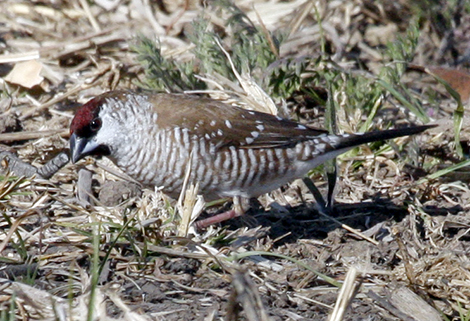


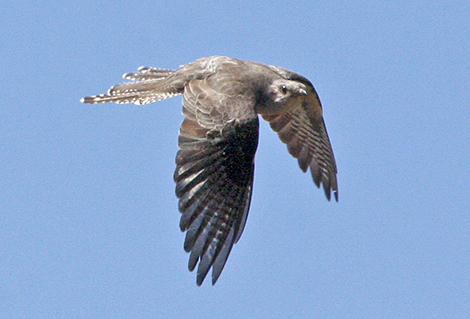
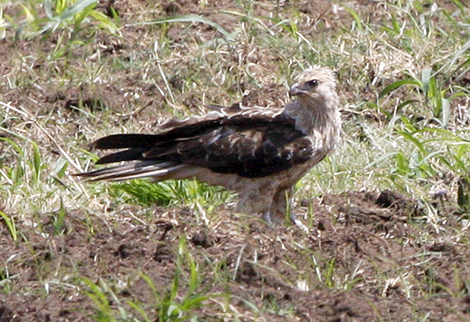


The four photos below were taken at our nearest local patch of rain-forest - about 30 km from home.
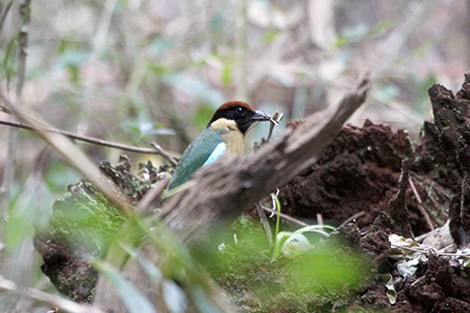
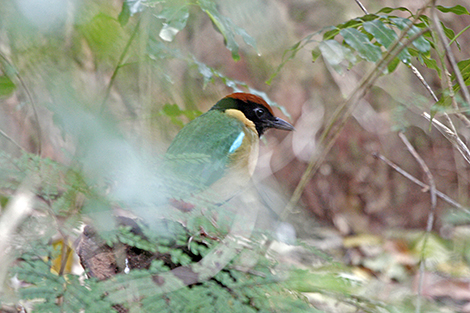
Noisy Pitta
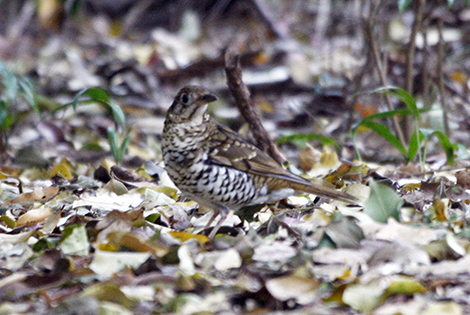
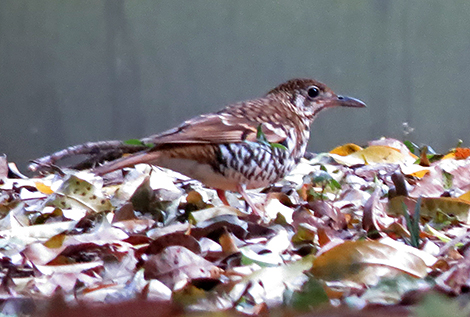
Russet-tailed Thrush
October, 2013
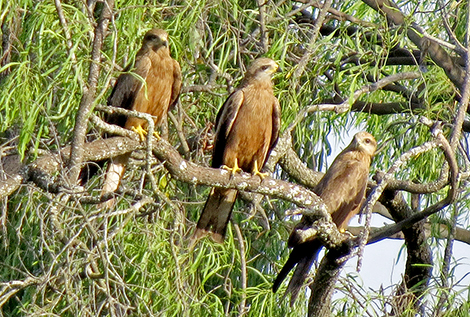
Black Kites
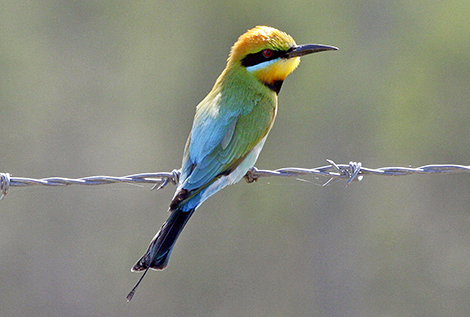
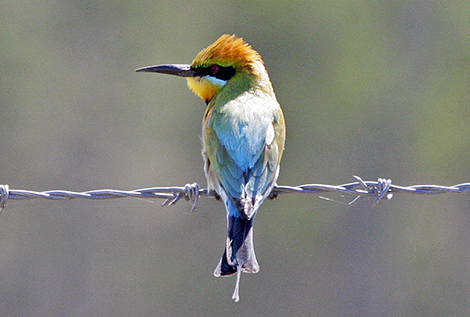
Rainbow Bee-eater
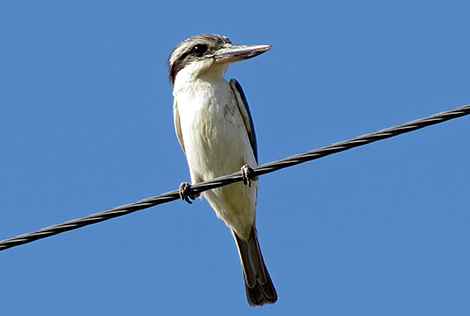
Red-backed Kingfisher
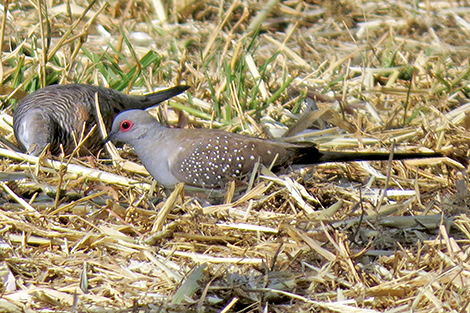
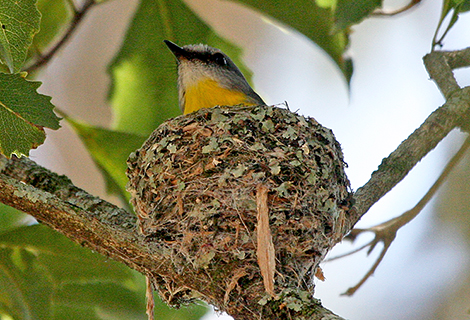


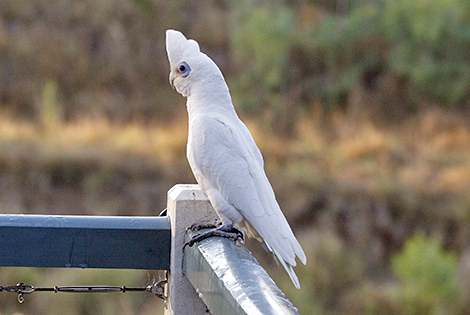
Little Corella
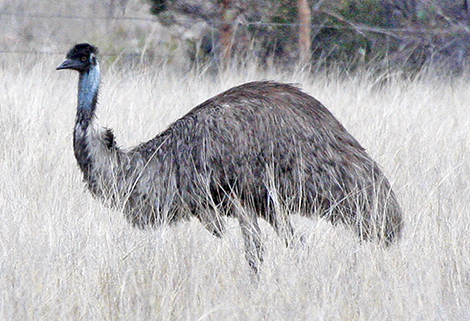
Emu
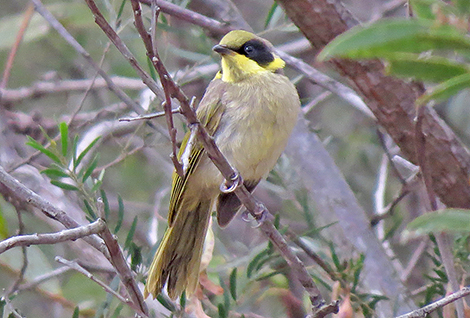
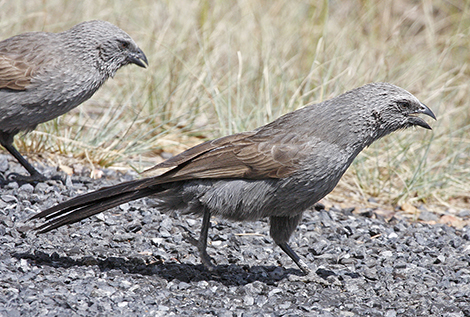


November, 2013
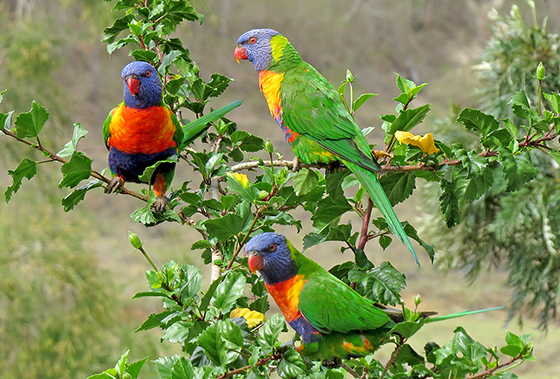
Rainbow Lorikeets
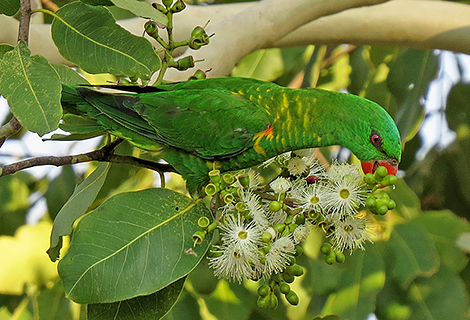
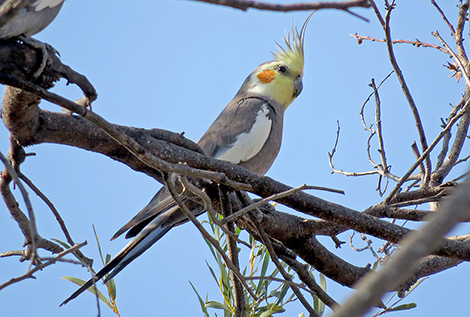


December, 2013
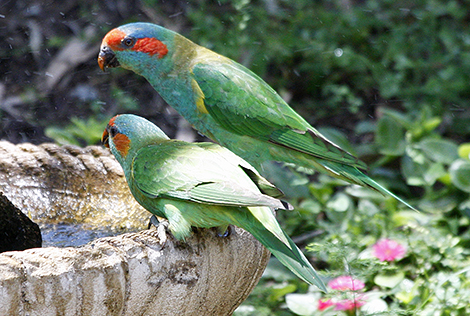
Musk Lorikeets

 
      
Please feel free to CONTACT US with any questions !
We are always pleased to answer any queries and to help
you in any way we can to plan your trip to Queensland.
email us at: jollyabberton@bigpond.com
Bill Jolly, Abberton, Helidon, Qld
(27º 34' 21' S; 152º 08' 21' E)
|
